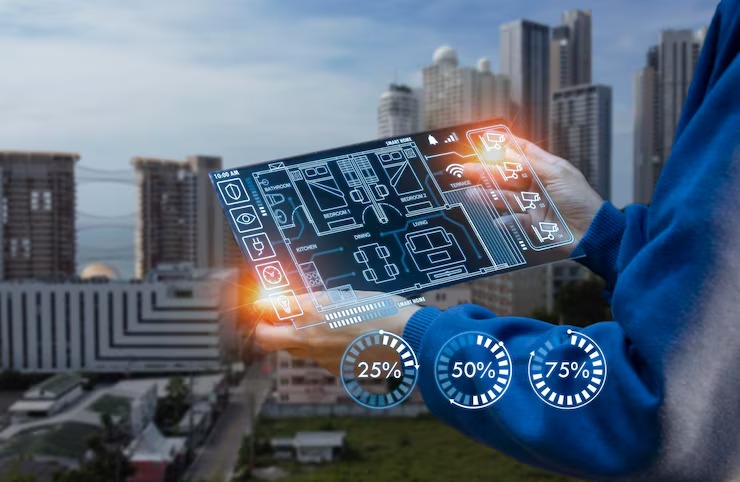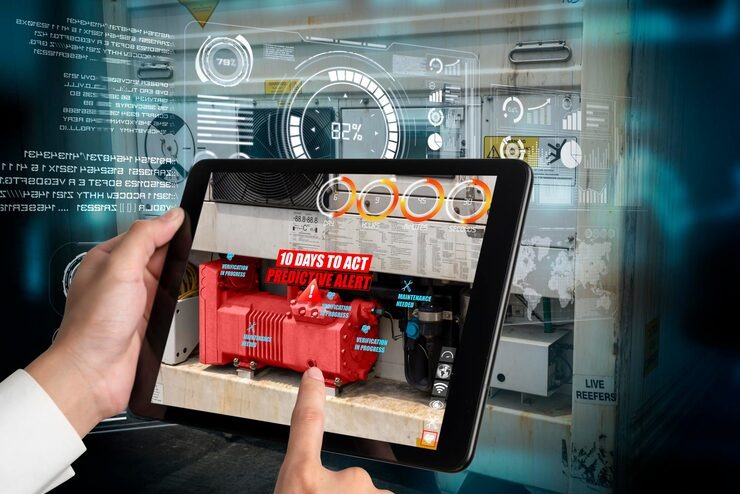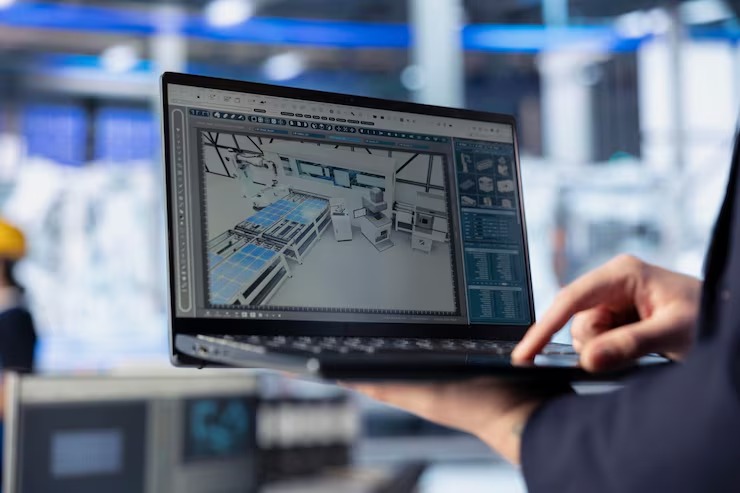Wondering if your commercial building needs a Building Management System Software (BMS Software)?
The smooth and efficient function of commercial buildings is important for the fast-paced business environment. A BMS can work as the backbone of modern building management. This system combines various subsystems to provide multiple insights, automate tedious tasks, and enable facility managers to have a comprehensive overview of the entire operation in a single window.

According to recent data, over 1.8 million commercial buildings utilize BMS software solutions, covering more than 2.4 billion square feet in the US. Additionally, almost 60% of commercial spaces exceeding 50,000 square feet are now managed with the help of BMS solutions.
In this article, we’ll explore what Building Management System Software is, how it works, what the benefits of using BMS are, and a lot more.
What is a Building Management System Software?
In short, a BMS software is a solution for connecting and controlling multiple systems of a commercial building.
This can include your HVAC systems, energy usage, lighting, access control, security, elevators, fire safety, etc. User interfaces, sensors, controllers, and analytics dashboards play important roles in the operation of such systems.
The latest versions of such solutions are called Integrated Building Management System Software solutions, which eliminate the need for stand-alone control systems by allowing building’s subsystems to flawlessly communicate with each other.
What are the Benefits of Adopting a BMS Software?
Some of the most vital reasons to consider installing a BMS software solution are as follows-
- Energy Efficiency
A modern BMS software solutions can optimize the functioning of various electrical and mechanical systems like HVAC, power systems, and lighting.
For example, lights can be automatically turned off when not required, and room temperature can be adjusted depending on occupancy. This can reduce energy bills by lowering energy consumption.
- Safety
A Building Management System Software can also integrate smoke detectors, fire alarms, and a range of other emergency systems into a single management platform.
Compared to a manual system, such automated solutions can speed up detection and response in case of emergencies. Moreover, with continuous monitoring and automated adjustments, a BMS software can also prevent accidents or minimize the risk of accidents.
- Comfort
BMS software solutions can efficiently control the indoor environment of commercial establishments by regulating temperature, air quality, and humidity. This ensures a far more comfortable working ambiance for the occupants.
The systems can also adapt as per the outdoor environment and occupancy conditions without needing any manual intervention.
- Data-Driven Insights and Reporting
Dashboards, historical trends, and real-time alerts through an Intelligent Building Management System Software can help building managers forecast needs, ensure compliance, and discover inefficiencies.
Over time, the collected data can help identify patterns that manual systems generally miss. For instance, the data can be used for predicting maintenance issues even before they occur. Moreover, with the latest systems integrated with AI, operational scenarios can also be simulated to further enhance efficiency.
- Sustainability & Regulatory Compliance
The tightened environmental and sustainability regulations have made it necessary for commercial facilities to take necessary steps for tracking their energy usage and minimizing their carbon footprint.
A BMS software solution can generate energy benchmarks and sustainability reports, allowing establishments to receive BREEAM and LEED certifications. By constantly monitoring consumption and emissions, these systems are also well-equipped to support the ESG goals of businesses.

What are the Different Types of Building Management System Software Solutions?
You can now find many different types of Building Management System Software solutions. The major options include-
1. Standalone BMS Software
As the name suggests, standalone systems can independently manage individual functions of a commercial building, like lighting, HVAC, or security.
As they work in isolation, it can be complex to control them in larger buildings with various subsystems.
Pros
- Setup is simple
- Lower upfront costs
- Ideal for smaller buildings
Cons
- Fragmented data visibility
- Limited system communication
- Lower efficiency
2. Integrated BMS Software
An integrated BMS solution is the preferred choice for buildings with multiple subsystems. They can unify HVAC, energy, HVAC, security, etc., into one centralized platform.
This allows for easier communication between subsystems, real-time monitoring, and improved decision-making.
Pros
- Centralized control of multiple subsystems
- Improved energy optimization
- Simplified management
Cons
- More complex installation compared to standalone systems
- Higher upfront costs
3. Intelligent Building Management System Software
Intelligent Business Management System Software Solutions are integrated with cutting-edge technologies, including AI, analytics, and Machine Learning for automating operations and predicting maintenance needs.
From optimizing energy usage to responding to changing needs and detecting patterns, an Intelligent BMS solution can significantly boost efficiency and predictive maintenance.
Pros
- Enables smarter automation
- Reduces downtime
- Optimizes efficiency
Cons
- Needs skilled management
- Higher implementation costs
- Data security considerations
4. Building Management System Software Open-Source
Open-source BMS software offers customizable, flexible solutions that buildings can deploy as per their requirements. A developer community generally supports such solutions, offering complete transparency into the operations.
However, the installation, integration, and maintenance of such systems require technical expertise.
Pros
- Adaptable and flexible
- Highly cost-effective
- Community-supported innovation
Cons
- Limited or no dedicated support
- Requires technical expertise
- Integration challenges
Building Management System Software List
If you’re looking for one such solution, here is a Building Management System Software list to help you kickstart your research-
- Schneider Electric EcoStruxure Building Operation- Focuses on IoT, analytics, scalable architecture, and remote monitoring.
- Johnson Controls Metasys- Popular BMS solution known for its seamless integration with security, lighting, and HVAC subsystems.
- Siemens Diego CC- If you’re looking for a powerful automation solution for your commercial building, this is one of the best options out there.
- IBM TRIRIGA- Offers a combination of real estate and facilities management. Ideal for managers with complex property portfolios.
- openMAINT- If you’re looking for a Building Management System Software Open-Source, this can be an excellent choice. The software is licensed under AGPL and is widely used by facility/property managers.

What is the Cost of Deploying BMS Software?
The cost of deploying a Business Management System Software solution varies significantly based on these factors-
- Initial Setup and Licensing
For smaller buildings, the licensing cost for BMS solutions can range from $5,000 to $10,000. For larger spaces, it could be $50,000 to $100,000. This generally includes integration with existing subsystems, system configuration, and setup.
- Sensors and Other Hardware
A significant cost of implementing a BMS solution is the hardware. From sensors and gateways to networking devices and controllers, the cost can range from $10,000 to $200,000 based on the size of the building and the connected systems.
- Integration and Installation
Around 10%-20% of the budget is consumed by wiring, installation, and integration. If the system comes with advanced features like AI, Machine Learning, or IoT, the costs can be higher.
- Software Updates and Maintenance
Around $2,000 to $5,000 is spent on software updates, cloud hosting, and maintenance every year. 24×7 monitoring and AI capabilities generally cost more in annual maintenance.
Unlock Facility Operation Efficiency and Simplicity with BMS Software
Gone are the days when a BMS software solution was a good-to-have feature in a commercial building. With the increasing demand for sustainability, efficiency, safety, and comfort, these systems are now a vital component of building operations.
While there are various options available, an increasing number of mid-to-large commercial buildings are opting for Integrated Building Management System Software Solutions due to their ability to seamlessly function with various subsystems.
A leading entity like Operational Intelligence can offer customized Integrated BMS deployment for unifying multiple subsystems into a single intelligent ecosystem. Their expertise ensures measurable improvements in cost control, sustainability, and efficiency, making them a preferred choice for future-ready commercial building operations.





